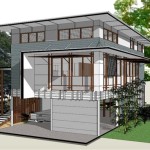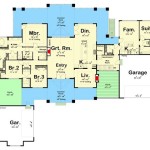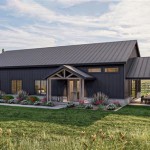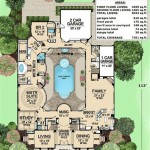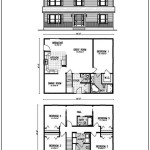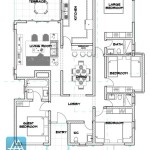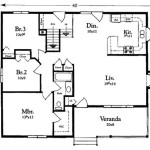House Plans Under 1800 Square Feet: Maximizing Comfort and Efficiency
The demand for smaller, more efficient homes is steadily increasing. Several factors contribute to this trend, including rising construction costs, a growing preference for simpler lifestyles, and an increased awareness of environmental sustainability. House plans under 1800 square feet offer a viable solution for individuals, couples, and small families seeking affordable and manageable living spaces. These plans require careful consideration to ensure optimal space utilization, functionality, and aesthetic appeal.
Designing a home within a limited square footage requires a strategic approach. Architects and designers must prioritize essential features, minimize wasted space, and incorporate design elements that enhance the perception of spaciousness. The success of a compact home lies in its ability to provide a comfortable and functional living environment without sacrificing quality or style.
This article explores the key considerations and design strategies involved in creating successful house plans under 1800 square feet, focusing on practicality, efficiency, and design ingenuity.
Understanding the Advantages of Smaller Homes
Choosing a house plan under 1800 square feet offers several compelling advantages. Financial benefits are perhaps the most significant. Smaller homes typically have lower construction costs due to reduced material requirements and labor hours. This affordability extends beyond the initial construction phase, impacting ongoing expenses such as property taxes, insurance premiums, and utility bills.
Smaller homes are inherently more energy-efficient. The reduced surface area minimizes heat loss in colder climates and heat gain in warmer climates, leading to lower energy consumption for heating and cooling. This energy efficiency translates into significant cost savings over the lifespan of the home and reduces the environmental footprint of the building.
Beyond cost savings, smaller homes promote a simpler lifestyle. The limited space encourages homeowners to declutter possessions and prioritize experiences over material accumulation. This can lead to a more organized and less stressful living environment. The reduced maintenance requirements associated with a smaller home also free up time for leisure activities and personal pursuits.
Finally, from an environmental perspective, smaller homes are inherently more sustainable. They require fewer resources to build and operate, contributing to a smaller carbon footprint. The trend towards smaller homes is a positive step towards more sustainable and responsible living practices.
Key Design Considerations for Maximizing Space
Designing a functional and comfortable home within 1800 square feet requires careful planning and a strategic approach to space allocation. Several design principles play a crucial role in maximizing the usability and perceived spaciousness of the interior.
Open floor plans are a common and effective strategy for creating a sense of openness. By eliminating walls between living areas such as the living room, dining room, and kitchen, the space feels larger and more connected. This design also facilitates better natural light distribution and encourages social interaction among occupants.
Vertical space utilization is another important consideration. High ceilings can create a feeling of grandeur and allow for the incorporation of taller windows, which enhance natural light penetration. Utilizing vertical storage solutions, such as floor-to-ceiling shelving and cabinets, maximizes storage capacity without consuming valuable floor space. Lofts can also be integrated to create additional living or storage areas.
Strategic window placement is essential for maximizing natural light and ventilation. Large windows and skylights can brighten interior spaces and reduce the need for artificial lighting. Proper window placement can also facilitate cross-ventilation, reducing reliance on air conditioning. Careful consideration should be given to the orientation of the house to maximize solar gain in winter and minimize it in summer.
Built-in furniture and storage solutions are invaluable for maximizing space in small homes. Built-in bookshelves, entertainment centers, and window seats provide functional storage while minimizing clutter. Murphy beds can transform a living room into a guest bedroom, maximizing the versatility of the space. These built-in elements should be integrated seamlessly into the design to create a cohesive and efficient living environment.
Multifunctional spaces are particularly valuable in smaller homes. A guest bedroom can double as a home office, or a dining area can serve as a workspace. Selecting furniture that can serve multiple purposes, such as a sofa bed or a coffee table with storage, is another effective strategy for maximizing space. Careful planning is required to ensure that these multifunctional spaces are adaptable and comfortable for various uses.
Specific Room Design Strategies: Kitchens, Bathrooms, and Bedrooms
Each room in a house under 1800 square feet requires specific design considerations to ensure functionality and comfort. The kitchen, bathroom, and bedrooms are particularly important areas to optimize.
In the kitchen, efficient layout and storage solutions are paramount. A galley kitchen or an L-shaped kitchen are often the most space-efficient designs. Utilizing vertical storage, such as tall cabinets and open shelving, maximizes storage capacity. Incorporating space-saving appliances, such as a compact dishwasher and a multi-functional microwave, can also free up valuable counter space. Light color palettes and reflective surfaces can enhance the sense of spaciousness in the kitchen.
Bathroom design in a small home requires careful planning to maximize functionality without sacrificing comfort. A walk-in shower is often a more space-efficient option than a bathtub. Wall-mounted sinks and toilets can free up floor space and create a cleaner, more modern aesthetic. Using mirrors strategically can also enhance the perception of spaciousness. Light and bright color schemes are generally preferred in smaller bathrooms.
Bedroom design should prioritize comfort and relaxation. Creating a serene and uncluttered environment is essential. Built-in storage, such as closet organizers and under-bed storage, can help minimize clutter. Choosing furniture that is appropriately scaled to the size of the room is also important. A minimalist design approach, with a focus on essential elements, can create a peaceful and inviting bedroom space. Integrating natural light through windows and skylights can further enhance the atmosphere.
In addition to these specific room design strategies, consider the overall flow and circulation within the house. Ensure that hallways are wide enough to allow for comfortable movement and that furniture placement does not obstruct pathways. A well-designed layout will maximize the usability and enjoyment of the space.
The careful selection of materials and finishes also plays a crucial role in the overall success of a small home design. Light colors and reflective surfaces can enhance the sense of spaciousness, while durable and low-maintenance materials can reduce ongoing maintenance costs. Choosing sustainable and eco-friendly materials can also contribute to the overall environmental sustainability of the home. Pay attention to the details, such as door hardware, lighting fixtures, and trim, to create a cohesive and aesthetically pleasing design.
House plans under 1800 square feet present a unique design challenge, requiring careful planning, innovative solutions, and a focus on functionality and efficiency. By embracing the design principles outlined above, it is possible to create a comfortable, stylish, and sustainable living environment within a compact footprint. The increasing popularity of smaller homes reflects a growing awareness of the benefits of simpler, more affordable, and more environmentally responsible living.
1800 Sq Ft Country Ranch House Plan 3 Bed Bath 141 1175

One Story 1 800 Square Foot Traditional House Plan 62427dj Architectural Designs Plans

House Plan 59084 Traditional Style With 1800 Sq Ft 3 Bed 2 Ba

3 Bed Modern Farmhouse Plan With Just Over 1 800 Square Feet Of Living Space And A Home Office 56500sm Architectural Designs House Plans

House Plan 82350 Ranch Style With 1800 Sq Ft 3 Bed 2 Bath

1800 Square Feet Home Design Ideas Small House Plan Under Sq Ft

Single Story House Plans 1800 Sq Ft Arts New Farmhouse

1800 Sq Ft Country House Plan 3 Bedroom 2 Bath 141 1084

House Plan 3 Beds 2 Baths 1800 Sq Ft 17 2141 Floor Plans Ranch One Story

Open Floor Plan Design Under 1800 Square Foot With Outdoor Living Area 7217

